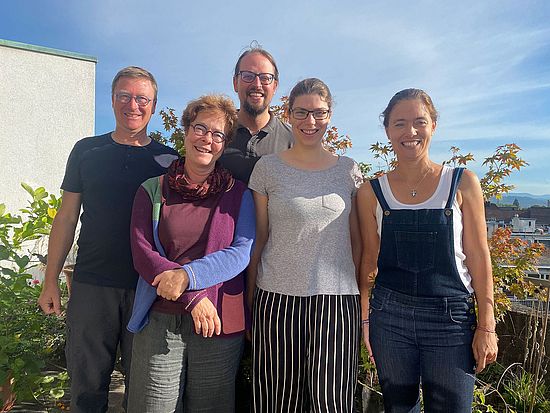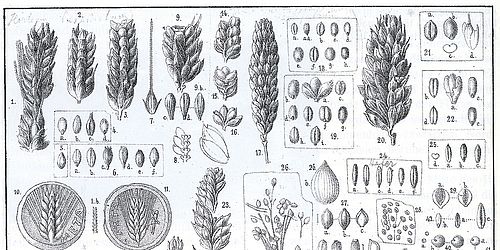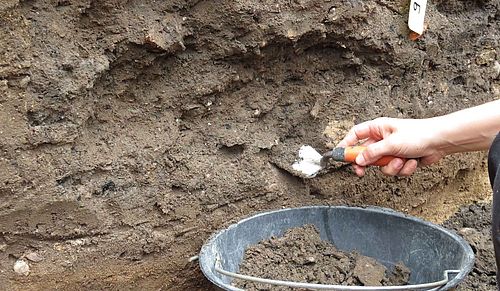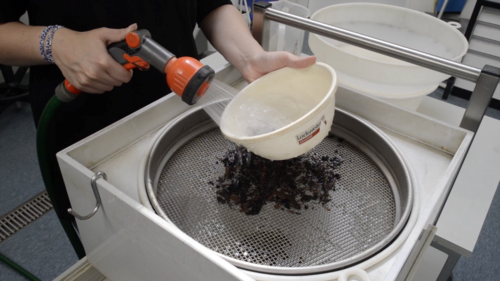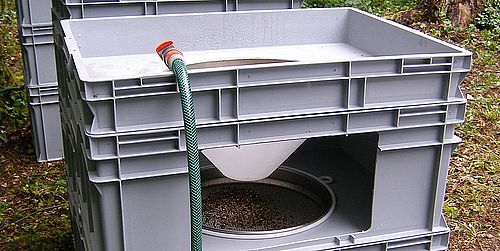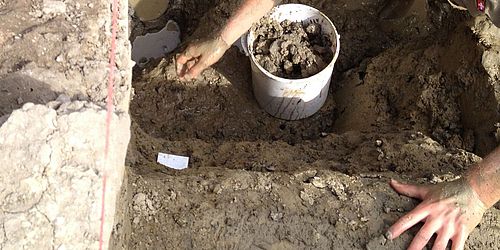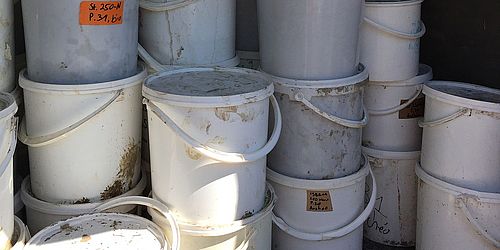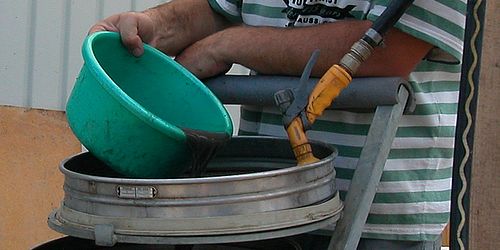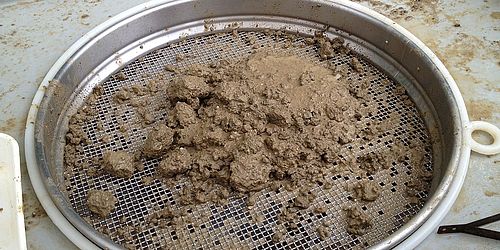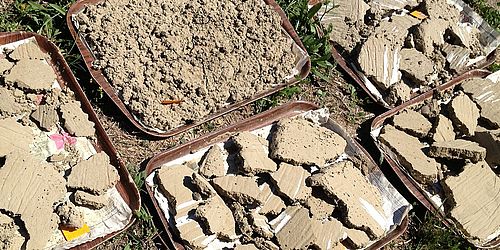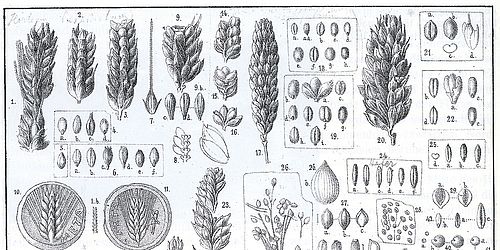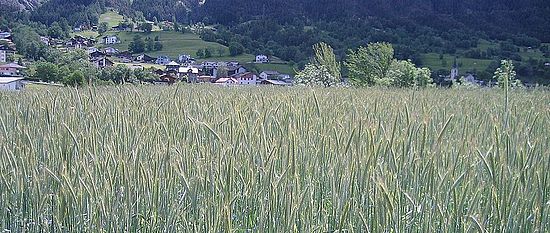
Archaeobotany
Archaeobotany working group
As a discipline within archaeobiology, archaeobotany is concerned with the study of plant remains, primarily from anthropogenic deposits from earlier periods. Alongside the other disciplines at the IPNA, it plays a key role in investigating and reconstructing the economy and natural environment of past eras in human history. Archaeobotany also provides valuable insights into the interpretation of archaeological structures.
The analysis primarily focuses on plant macro-remains (seeds and fruits, wood, leaves, stems and other vegetative plant parts). Many of these finds can be identified to species level. In addition, micro-remains, such as pollen and spores, are also examined.
Introductory literature:
- Cappers, R.T.J. and Neef, R. (2012) Handbook of plant palaeoecology. Groningen Archaeological Studies. Groningen.
- Jacomet, S. and Kreuz, A. (1999) Archaeobotany. Stuttgart.
- Jacomet, S. (2013) Archaeobotany: analyses of plant remains from waterlogged archaeological sites. In: Menotti, F. and O'Sullivan, A. (eds.) The Oxford Handbook of wetland archaeology. Oxford, 497-514.
- Pearsall, D.M. (2015) Paleoethnobotany: a handbook of procedures. Walnut Creek.

Cyclical courses:
- Lecture "Introduction to Archaeobotany": takes place every four semesters, provides an overview of the entire subject area.
- Practical course "Determination of plant remains (seeds and fruits) from anthropogenic and natural deposits": Familiarization with the most important archaeobotanical finds; every spring semester.
- "Archaeobiological field course": one-week course held every year; practical application of the disciplines taught at the IPNA.
- Internship "Determination, data collection, evaluation and interpretation of botanical macroremains from excavations": One-week course at Master's level; staff work with material from an actual site.
The archaeobotany working group focuses on plant macro remains from all parts of Switzerland. Individual projects also involve excavations abroad in countries such as France, Germany, Italy, Israel and Egypt. The samples cover all archaeological periods, although the earliest (Palaeolithic, Mesolithic) and latest (modern) periods are underrepresented. Topics covered are extremely varied; current focal areas include the layers of Neolithic lakeside settlements and their formation processes, Bronze and Iron Age settlement structures, Roman cremation graves and medieval features.
Contact Archaeobotany
Staff
Associates and alumni staff
| Name | Position | ||
|---|---|---|---|
| Dr. Christoph Brombacher | Freelance academic co-worker | ||
| Giovanni Di Stefano | former technical co-worker | ||
| Dr. Annekäthi Heitz | Freelance academic co-worker | annekaethi.heitz-at-unibas.ch | |
| Prof. Dr. Stefanie Jacomet | Freelance academic co-worker | ||
| Dr. Lucie Martin | Freelance academic co-worker | lucie.martin-at-unige.ch | |
| Dr. Angela Schlumbaum | Freelance academic co-worker | ||
| Dr. Lucia Wick | Freelance academic co-worker | lucia.wick-at-unibas.ch |

Projects not in the database
No further projects at present.
Samples for archaeobotanical investigations are usually taken by archaeologists on excavations, and ideally in consultation with archaeobotanists from the IPAS. Samples are treated at the IPAS or by personnel who have been trained either at the IPAS or by us in the cantons. Identifying and analysing plant macro remains requires considerable experience and can only be done by specialists.
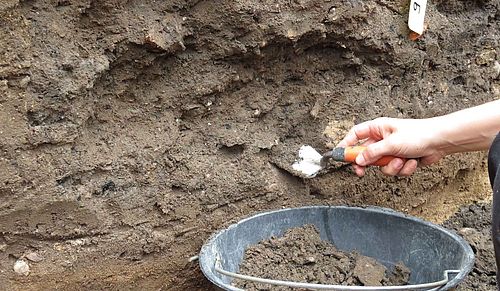
Sampling in the field
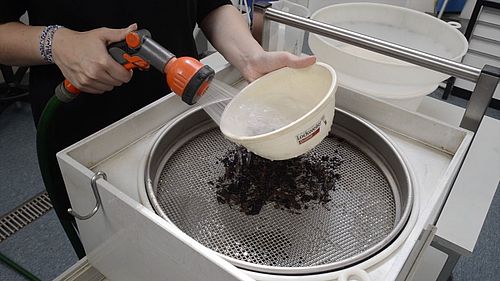
Sieving of samples
The sediment samples are first soaked in water. If the sediment is compact, a pretreatment of freezing and thawing is applied to facilitate sieving. Careful wash-over sieving separates the organic components from the inorganic ones. The sieving residues are separated into different fractions using sieves of different mesh sizes to facilitate sorting.
- Instruction manual to the construction of a transportable sieving station
- Instruction manual to treatment of archaeobiological sediment samples
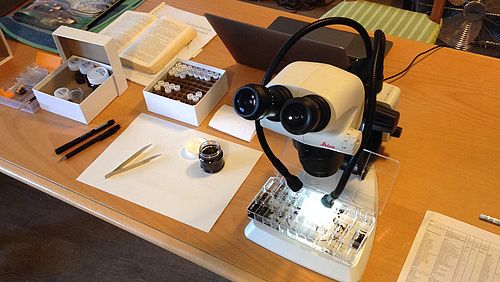
Identification of plant remains
Plant macro remains are sorted and identified using a binocular microscope with magnifications between 6x and 50x. The IPAS houses an extensive reference collection of modern seeds and fruits, as well as specialised literature, to assist with identification.
Evaluation according to the archaeological questions
The results are recorded in the ArboDat database. The evaluation is based on the archaeological questions.
Quick Links
Social Media

